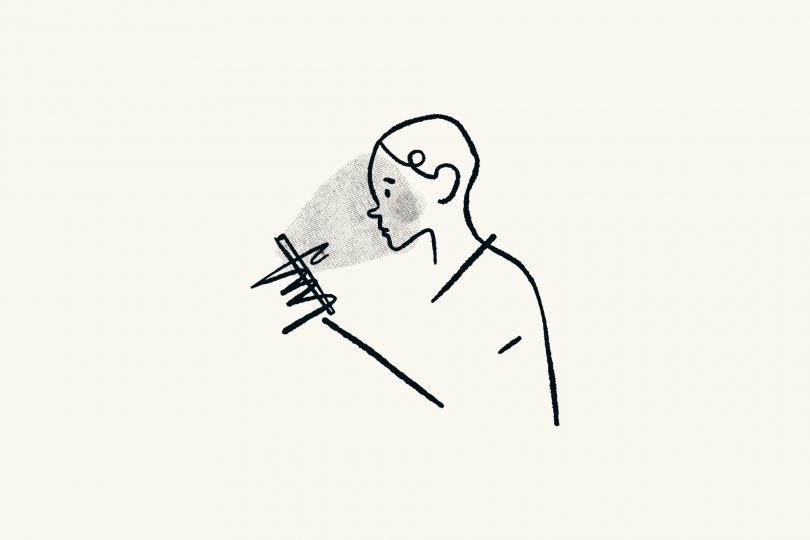FOR WELL OVER a year, COVID has been at the very centre of our lives. But, alongside the fight to contain the virus, governments and news organisations have been wrestling a less obvious threat – the global spread of misinformation.
‘Misinformation’ describes an ‘information disorder’ – inaccurate information innocently or maliciously shared, or genuine information shared with the intent to cause harm. But once it has filtered into society, can it be reversed?
The concept of misinformation is not new, although the term ‘fake news’ – a politically-charged synonym – is now cemented in our vernacular, popularised by its prolific use from U.S. ex-President Donald Trump.
The exposure to misinformation has, in recent times, been exacerbated by the rise of social media platforms. Recent studies have found that misinformation is 70 per cent more likely to be retweeted on Twitter than accurate articles and can reach audiences up to six times faster.
The means by which it spreads can be difficult to identify, especially to those not attuned to it. Innocuous sharing of false governmental documents or websites and image doctoring is common, particularly in the social media age. The abundance of text-based memes and emotive recontextualising of imagery is theoretically more obvious, but is often shared via closed-messaging apps.
It’s easy to be left overwhelmed by the abundance of contradictory information online and in public discourse, and in a pre-COVID world, the accessibility of fact-checking and verification resources was underdeveloped, especially to the general public. This allowed online trolls, political agents and other spreaders an easy path to enact their motives without much resistance.
The impacts of misinformation on society are easily seen in the 2020 U.S. election. Online platforms formed a societal battleground, resulting in national divide and conflict – at its core, mistruths, misguidance and rampant misinformation, particularly from the then-president.
Are we facing two viruses?
The way that misinformation spreads is much like that of a virus. An inaccurate article, malicious or otherwise, can quickly gain social momentum under the right conditions, such as the uncharted territory of a global pandemic.

The spread of misinformation follows a similar pattern to that of COVID. Source: who.int
A study from the Empirical Studies of Conflict project at Princeton University shed light on the spread of COVID-based misinformation throughout the world in 2020. Over 5,500 unique examples were identified, ranging from miracle cures and prevention techniques to health advice conspiracies to politically charged speculation.
A key finding is that the type of misinformation spread in a region is typically endemic – locally produced content will circulate within its source region. This is, in theory, a good thing. For Australia – much like the COVID itself – the government can work on flattening a misinformation curve when there is minimal international flow.
Once it’s out there, can we do anything about it?
With the right resourcing, regulation and activism, the impact of misinformation can be reduced. But, it requires a multi-targeted approach to be effective.
In response to the sharing of inaccurate COVID information, UNESCO has produced a series of frameworks to assist in identifying the kinds of media being spread, the medium in which they are being received and methods of response. Since its publication, independent fact-checking platforms and verification tools have been established (Politifact, factcheck.org, Les Observateurs, for example), assisting both the media in disproving inaccuracies and supporting the target audiences.
After much hesitation throughout 2020, Facebook and Twitter have both enlisted independent fact-checking programs to warn users that the content they are consuming is under review or has been proven to be false – an enormous step in slowing untruths on social media.
In Australia, a critical threat now is the distribution of misinformation about the COVID vaccines and their national rollout. In response to a rise in vaccine hesitancy, the federal government has implemented a number of resources, including a ‘mythbusting‘unit and a FAQ webpage ‘Is it true?’.
But people aren’t always looking to the government for clarity. Satirical programs, such as ABC’s The Weekly in Australia or news-tainment shows such as Last Week Tonight in the US regularly run segments on mistruths around COVID, which gather momentum on YouTube and social media.
A battle for the Australians now is when their vaccine will be available, after a much slower rollout than expected. This delay has created sceptics amongst some groups, which may lay foundations for more vaccine misinformation.
The unknowns surrounding the safety of the AstraZeneca and Johnson and Johnson vaccines halted their usage in Europe and the US – as expected, misinformation formed the basis of many shared details of the virus.
In an ideal world, as the global vaccine rollout continues and the number of inoculated populations increases without notable side-effects, the vaccine hesitancy should diminish. With more vaccines on their way and a stronger rollout strategy promised, and a more informed public, we should hopefully see less misinformation on our screens and a more informed, inoculated society.
Photo by visuals on Unsplash, a project by Charles Deluvio.




I rather like the idea that misinformation is like a virus. So true. It can be stopped and treated if we really want to stop it, but there will always be those problematic anti-vaxers. Sigh.
I think all social media platforms need to implement some sort of fact checking to verify sources. Either warning people that certain news sources have a good / bad reputation, or showing alternative links underneath so readers can look at other sources as well.
The Google News app puts similar stories together so you can look at different sources for the same story, but it occasionally gets mixed up and suggests random stuff too.
Oh I just saw Facebook has a “About This Content” button on articles people post. It’s not obvious though so I can’t imagine it gets used much.
I like your point about the slower than expected vaccine rollout and the ongoing mishaps – ie astrazeneca advice / supply issues with the campaign that could be damaging to public confidence, and enable the cherry picking of facts to suit a narrative of misinformation.
Albeit true, many trusted media organisations such as The Sydney Morning Herald’s report last week ‘NSW woman’s death likely linked to COVID-19 vaccine: TGA’ perhaps does not help either as it can be misconstrued, distorted and then shared (especially when only the headline is read on social media). But I understand the media’s role to report actual and correct information in the public interest. Tough balance.
ah this is me! not sure why only the student no. is there
Fact check prompts are great given that many people use social media as not only a tool to connect with likeminded people, but also as a primary source of news and information. Anti-vax misinformation on Facebook and Twitter is as hard as ever to find. However, I do think the delay in these changes has been much too slow. With some users already misguided by years of unchecked sharing now choosing to disengage with social media giants for smaller platforms like MeWe or Telegram where unfounded views or misinformation go unchallenged by the provider.
I really liked the way you portrayed misinformation as a virus. It is concerning that the only way out of this pandemic, i.e. the inoculation of the population, is currently being undermined by the distribution of misinformation regarding the vaccines. But as you pointed out, its good to see that the federal government is implementing resources to combat the anti-vaxxer narrative.
Regarding the woman’s death after receiving the AstraZeneca vaccine, I was so surprised to hear that mainstream newsrooms were reporting on it. Given the vaccines proven low-risks, the media’s coverage of the woman’s death in my opinion, only stood to empower the anti-vaxxer narrative. This is something not within the public interest. I wonder how much the newsroom’s considered this before the reported on the death?
I really liked the metaphor of flattening the misinformation curve. The in-article visual you chose provided a powerful illustration of how important individual choices can be, though helping individuals make those curve-flattening choices is so complex.
Misinformation is certainly a virus and is proving to be more harmful in some ways than COVID itself. Social media giants like Facebook, YouTube and Twitter have their work cut out although government, whether it’d be local, state or federal is also responsible for inoculating the Australian public against misinformation.
It’s ridiculous how Craig Kelly got away with posting misinformation about COVID throughout 2020 up until February this year. The PM should’ve pulled him up on it much earlier. Furthermore, it’s disconcerting to see Craig Kelly has joined forces with his new mate, Pete Evans: two peas in a pod.
As others have mentioned, I really like the analogy of misinformation as a virus as shown in the great visual graphic you’ve found. I do wonder how regularly fact-checking serves are actually consulted by the general public. I admire all the extra legwork they do but I hope it’s not in vain.
What stood out to me the most is how you described misinformation like a virus. Prior to this, I didn’t see misinformation spreading like a virus, but now I recognise the similarities. While it might be easy to identify these two pandemic are negatively harming people, I think the real challenge is finding solutions for it.
Cleaver set up comparing misinformation and its spread to a virus!
It’s really concerning how rapidly and unconsciously misinformation spreads. I wonder if making academic and peer reviewed data bases and library resources more accessible would encourage people to employ deeper research but this is such an entrenched problem of entitlement, whereby free speech means we can speak and share anything we want but we don’t have the accountability checks to ensure that we are actually adding value to these topics.
Misinformation definitely is a virus! I have had my fair share of misinformation being passed around between friends and families and yes, they are on closed messaging apps. It’s alarming to see people actually believing whatever they read because those kinds of thing do more harm than good.
Although, not everyone is trained or knowledgeable to fact check, I believe proper media literacy is needed as that can help slow down/reduce the spread of misinformation. Easier said than done, yes, but I think it is one effective way to actually combat misinformation.
[…] Originally posted on The City Journal […]